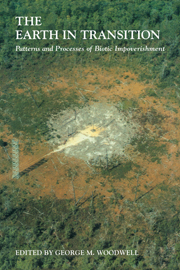
- Cited by 6
-
Cited byCrossref Citations
This Book has been cited by the following publications. This list is generated based on data provided by Crossref.
Woodwell, George M. 1989. The warming of the industrialized middle latitudes 1985?2050: Causes and consequences. Climatic Change, Vol. 15, Issue. 1-2, p. 31.
McGinnis, Michael V. 1994. The Politics of Restoring versus Restocking Salmon in the Columbia River. Restoration Ecology, Vol. 2, Issue. 3, p. 149.
Myers, Norman 1995. The World's Forests: Need For a Policy Appraisal. Science, Vol. 268, Issue. 5212, p. 823.
Lugo, Ariel E and Gucinski, Hermann 2000. Function, effects, and management of forest roads. Forest Ecology and Management, Vol. 133, Issue. 3, p. 249.
Fowler, C. W. and Hobbs, L. 2003. Is humanity sustainable?. Proceedings of the Royal Society of London. Series B: Biological Sciences, Vol. 270, Issue. 1533, p. 2579.
Pugh, Brittany E. and Field, Richard 2023. Effect of Canal Bank Engineering Disturbance on Plant Communities: Analysis of Taxonomic and Functional Beta Diversity. Land, Vol. 12, Issue. 5, p. 1090.
- Publisher:
- Cambridge University Press
- Online publication date:
- November 2009
- Print publication year:
- 1991
- Online ISBN:
- 9780511529917




